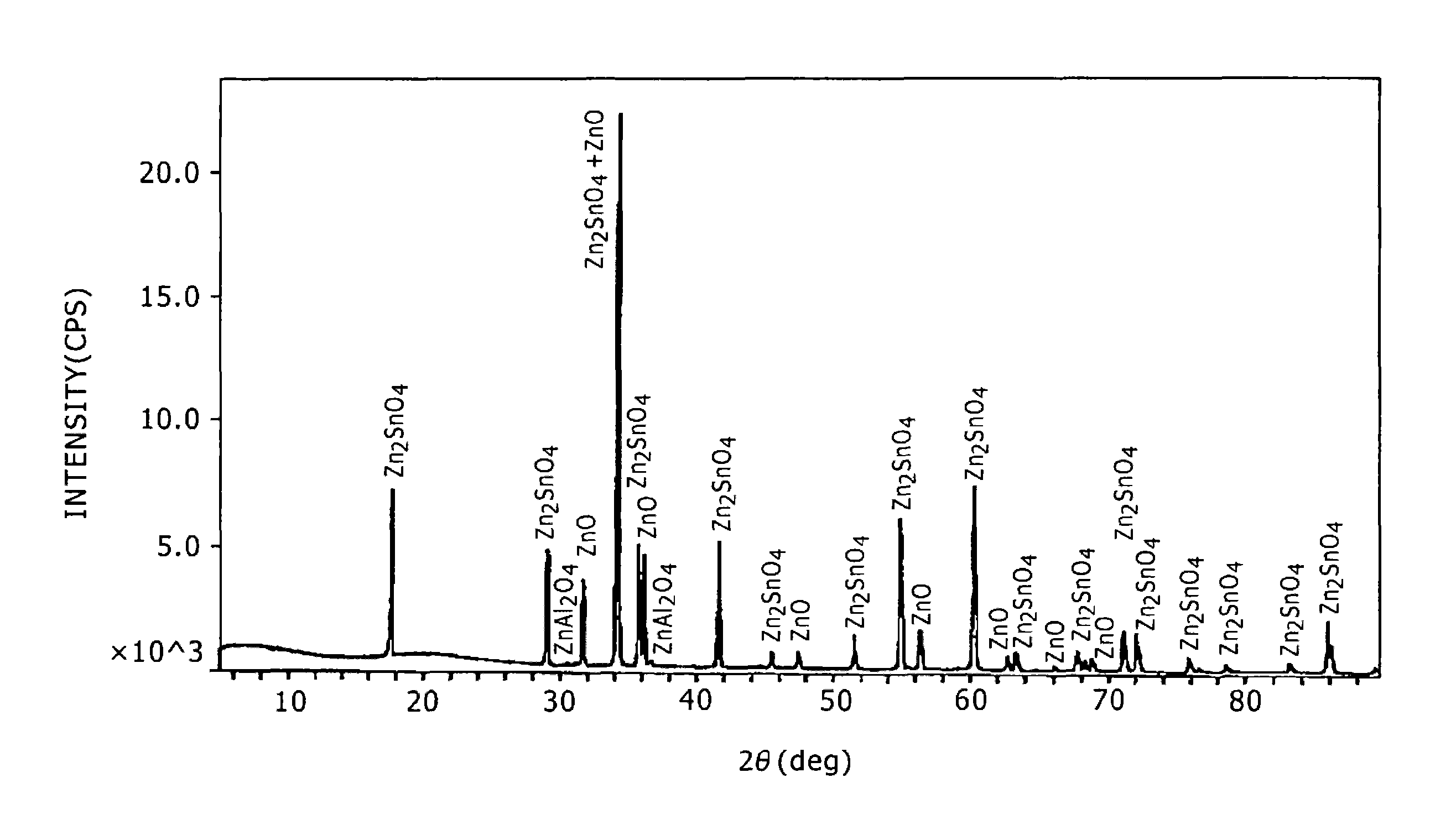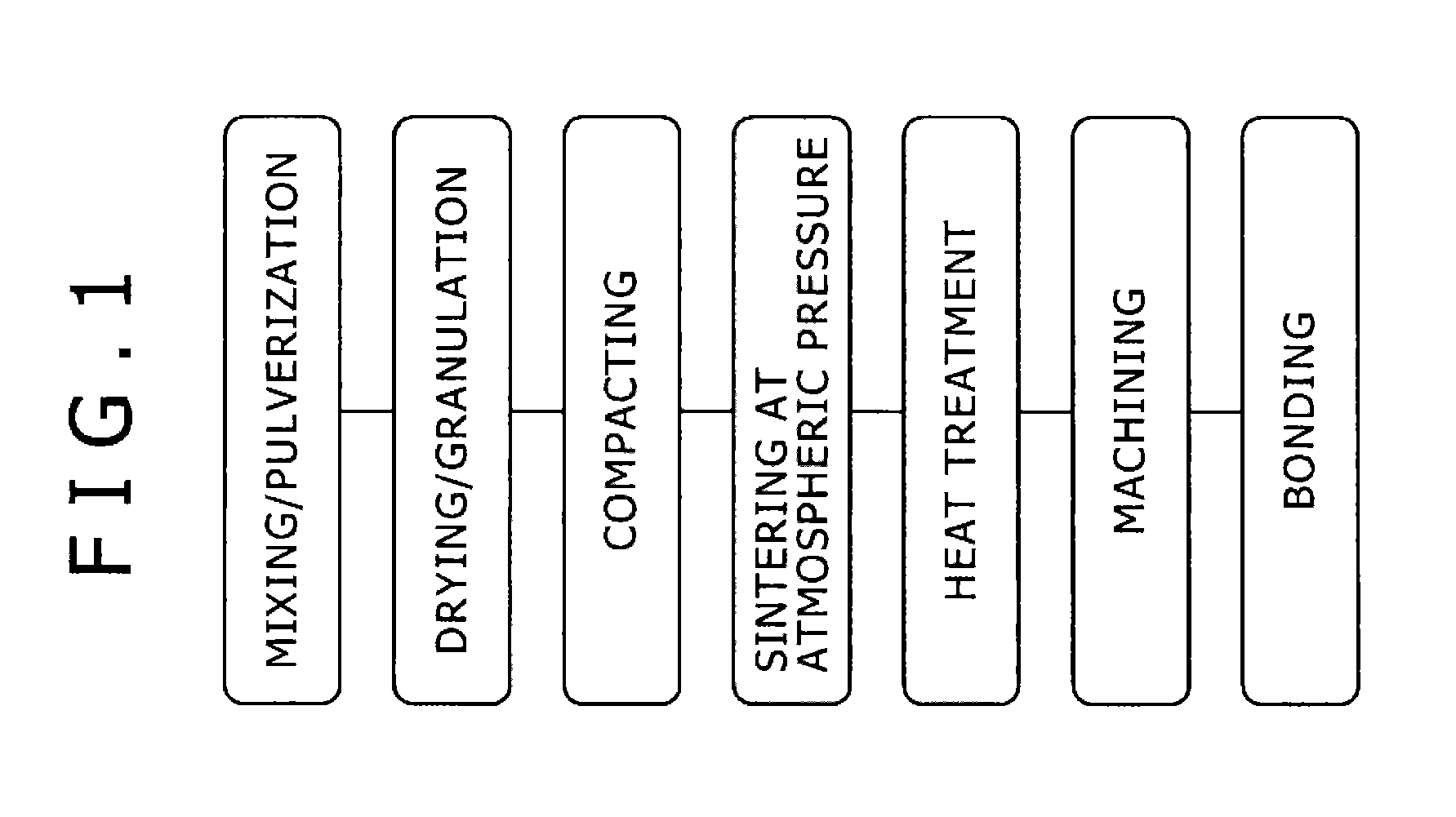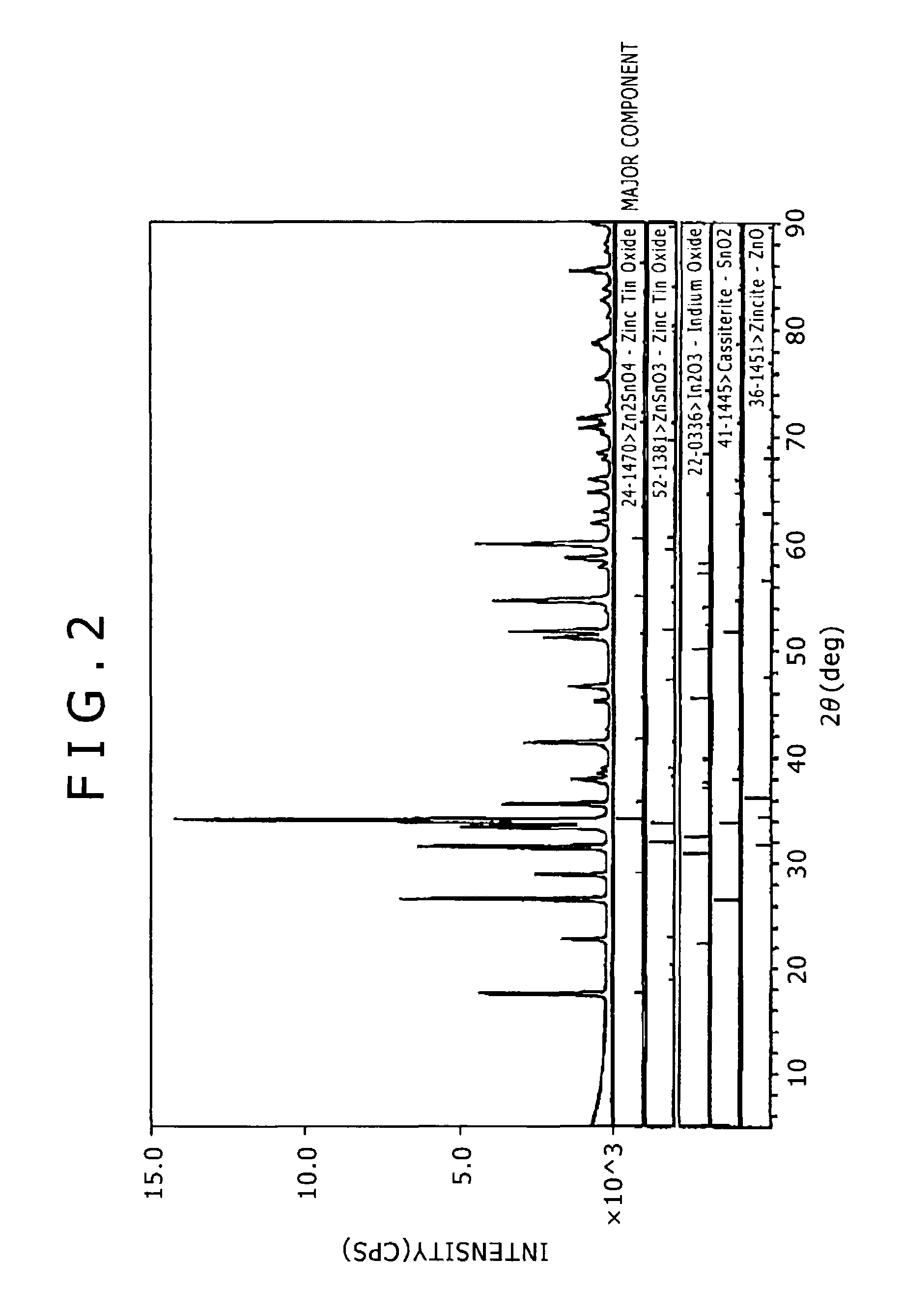Oxide sintered compact and sputtering target
a technology of sputtering target and compact, which is applied in the direction of diaphragms, conductive materials, wood working apparatuses, etc., can solve the problems of high material cost in the mass production process, and achieve the effect of low resistivity, high relative density and reduced material cos
- Summary
- Abstract
- Description
- Claims
- Application Information
AI Technical Summary
Benefits of technology
Problems solved by technology
Method used
Image
Examples
experimental example 1
[0078]A zinc oxide powder (JIS Class 1, 99.99% purity), a 99.99%-purity tin oxide powder, and a 99.99%-purity indium oxide powder were blended in a ratio of [Zn];[Sn];[In] of 40.0:40.0:20.0 and mixed in a nylon ball mill for 20 hours. Next, a powder mixture obtained in the step was dried, granulated, preformed through die press at a pressure of 0.5 tonf / cm2, and compacted through CIP at a pressure of 3 tonf / cm2.
[0079]The resulting compact was sintered by holding at 1500° C. at atmospheric pressure for 7 hours. The sintering was performed in an oxygen atmosphere by feeding oxygen gas into a sintering furnace. The compact after sintering was introduced into a heat treatment furnace and heat-treated at 1200° C. for 10 hours. The heat treatment was performed in a reducing atmosphere by feeding nitrogen gas into the heat treatment furnace.
[0080]Thus, an oxide sintered compact of Experimental Example 1 was obtained. The oxide sintered compact was analyzed by X-ray diffractometry under the...
experimental example 2
[0085]An oxide sintered compact of Experimental Example 2 was prepared by the procedure of Experimental Example 1, except for blending the materials in a ratio of [Zn]:[Sn]:[In] of 48.0:32.0:20.0, sintering the compact by holding at 1550° C. for 5 hours, and subsequently subjecting the compact to a heat treatment at 1150° C. for 14 hours.
[0086]The results are indicated in FIG. 3 and as Sample No. 3 in Table 1. FIG. 3 and Table 1 demonstrate that the oxide sintered compact included Zn2SnO4, ZnSnO3, and In / In2O3—ZnSnO3 solid solution, but substantially no ZnxInyOz was detected. The oxide sintered compact was subjected to X-ray diffractometry under the conditions and was found to have a maximum peak intensity of I1 in a (311) plane of the Zn2SnO4 phase and a maximum peak intensity of I2 in a (104) plane of the In2O3 phase and to have an intensity ratio (I2 / I1) of 0.24 within the preferred range (0.5 or less) in the present invention.
[0087]In addition, the sintered compact was machined ...
experimental example 3
[0088]An oxide sintered compact of Experimental Example 3 was prepared by the procedure of Experimental Example 1, except for blending the materials in a ratio of [Zn]:[Sn]:[In] of 53.0:27.0:20.0, sintering the compact by holding at 1600° C. for 8 hours, and subsequently subjecting the compact to a heat treatment at 1200° C. for 16 hours.
[0089]The results are indicated in FIG. 4 and as Sample No. 4 in Table 1. FIG. 4 and Table 1 demonstrate that the oxide sintered compact included Zn2SnO4, ZnSnO3, and In / In2O3—ZnSnO3 solid solution, but substantially no ZnxInyOz was detected. Independently, the oxide sintered compact was subjected to X-ray diffractometry under the conditions and was found to have a maximum peak intensity of I1 in a (311) plane of the Zn2SnO4 phase and a maximum peak intensity of I2 in a (104) plane of the In2O3 phase and to have an intensity ratio (I2 / I1) of 0.15 within the preferred range (0.5 or less) in the present invention.
[0090]In addition, the sintered compac...
PUM
| Property | Measurement | Unit |
|---|---|---|
| electrical resistivity | aaaaa | aaaaa |
| electrical resistivity | aaaaa | aaaaa |
| temperature | aaaaa | aaaaa |
Abstract
Description
Claims
Application Information
 Login to View More
Login to View More - R&D
- Intellectual Property
- Life Sciences
- Materials
- Tech Scout
- Unparalleled Data Quality
- Higher Quality Content
- 60% Fewer Hallucinations
Browse by: Latest US Patents, China's latest patents, Technical Efficacy Thesaurus, Application Domain, Technology Topic, Popular Technical Reports.
© 2025 PatSnap. All rights reserved.Legal|Privacy policy|Modern Slavery Act Transparency Statement|Sitemap|About US| Contact US: help@patsnap.com



